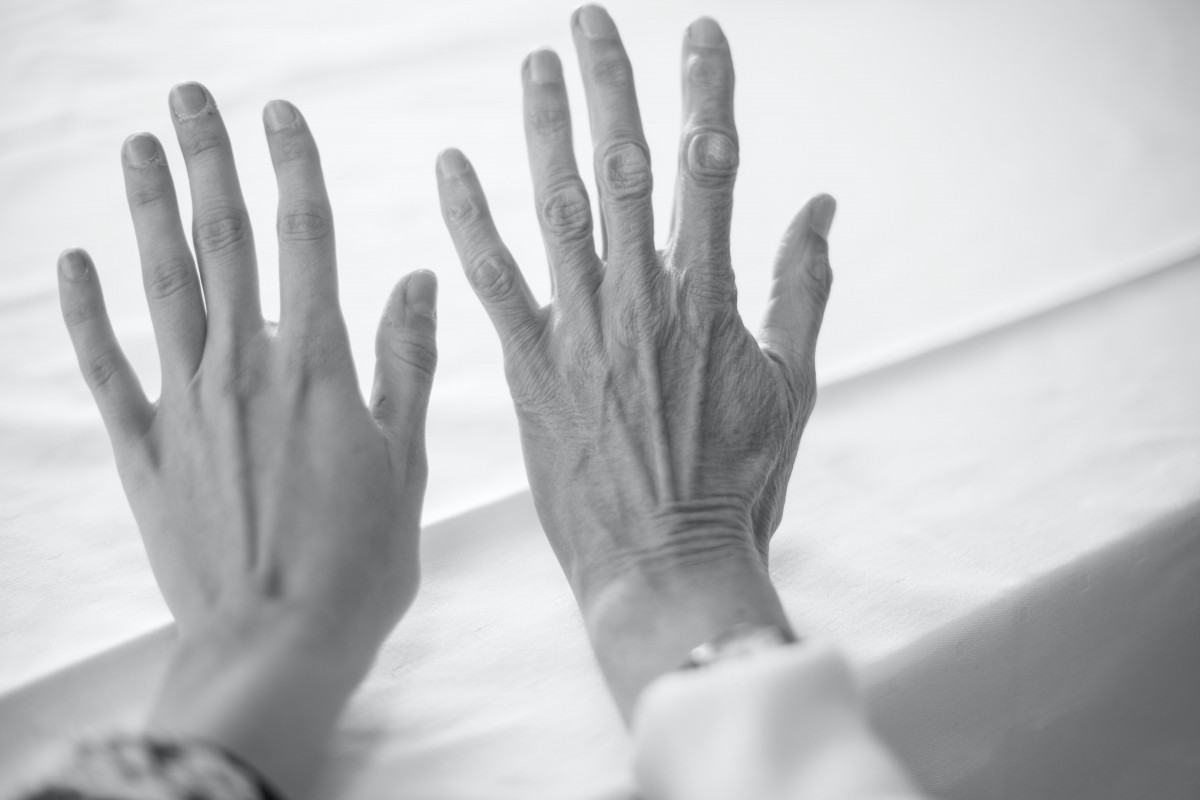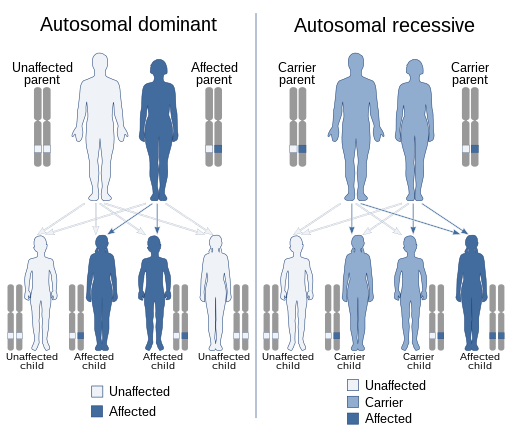
How are genetic diseases inherited II: autosomal recessive inheritance

Some diseases are recessively inherited. This means that a person has to inherit two mutated copies of the same gene (one mutated copy from each parent) to develop the disease. If a person inherits a mutated copy of a gene and a normal one, in most cases they will be a healthy carrier, since the normal copy will compensate for the mutated one. Being a carrier means that you do not have the disease, but you do have a mutated copy of the gene. Examples of autosomal recessive diseases are cystic fibrosis and sickle cell disease.
How are recessive disorders inherited?

If both parents are carriers of the same gene mutation, they can pass on the mutated or normal gene to their offspring and this will happen randomly.
Each of the children of parents who carry the same gene mutation has a 25% chance (1 in 4 chances) of inheriting the mutation from both parents and developing the disease. This also means that there is a 75% chance (3 out of 4 chances) that the child is not affected by the disease. This probability remains the same in each pregnancy and both in boys or girls.
- There is also a 25% chance (1 in 4 chances) that the child will inherit a copy of the mutated gene from one of his parents, so he will be healthy but a carrier ,like his parents.
- Finally, there is a 25% chance (1 in 4 chances) that the child will inherit both copies of the normal gene. In this case the child will not suffer from the disease, nor will he be a carrier.
- These possible outcomes happen randomly. The probability remains the same in each pregnancy and between boys and girls.
Carrier testing and pregnancy testing
There are many options available for people with a family history of recessive genetic diseases. Mutation carrier testing checks if both partners are carriers of the mutation. This information can be helpful when planning a pregnancy.
There is a test that can be performed during pregnancy to see if the baby has inherited the disease. It is wise to discuss this with your doctor or geneticist, who will offer you the pertinent information and instructions on the procedure.
Other family members
If someone in your family has a recessive inherited disease, they may want to tell other family members. This can help to get their diagnosis or whether they plan to have children. However, some people find it difficult to discuss genetic diseases or abnormalities with family members. In some cases, for fear of causing an anxiety situation and, in others, for not having contact with their relatives. This can be solved by going to genetic specialists, who have enough experience in these environments to offer help and discuss the situation with other family members.

Things to bear in mind
-
In autosomal recessive inheritance, a person needs to inherit both copies of a mutated gene to develop the disease (25% chance). If a person inherits only one copy of the mutated gene, they are a carrier (50% chance). This occurs randomly and the probability is the same for each pregnancy and does not depend on sex.
-
A genetic mutation cannot be corrected. It is present throughout life.
-
A genetic mutation is not something that can be spread to another person. Thus, a carrier of a genetic mutation can be, for example, a blood donor.
-
People may feel embarrassed when a genetic mutation runs in their family. Therefore, it is important to remember that no one is to blame and that no one has done anything wrong to make it happen.
